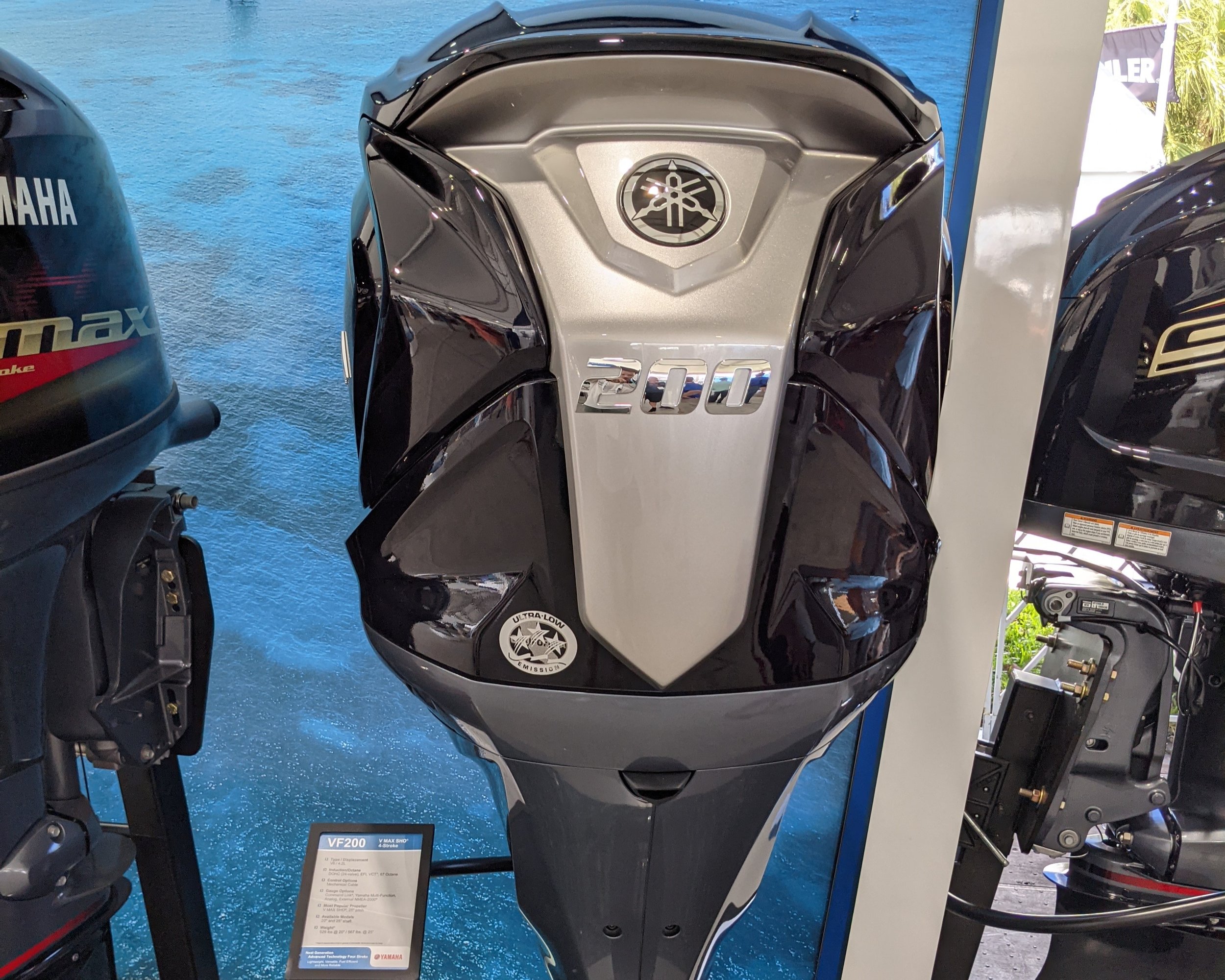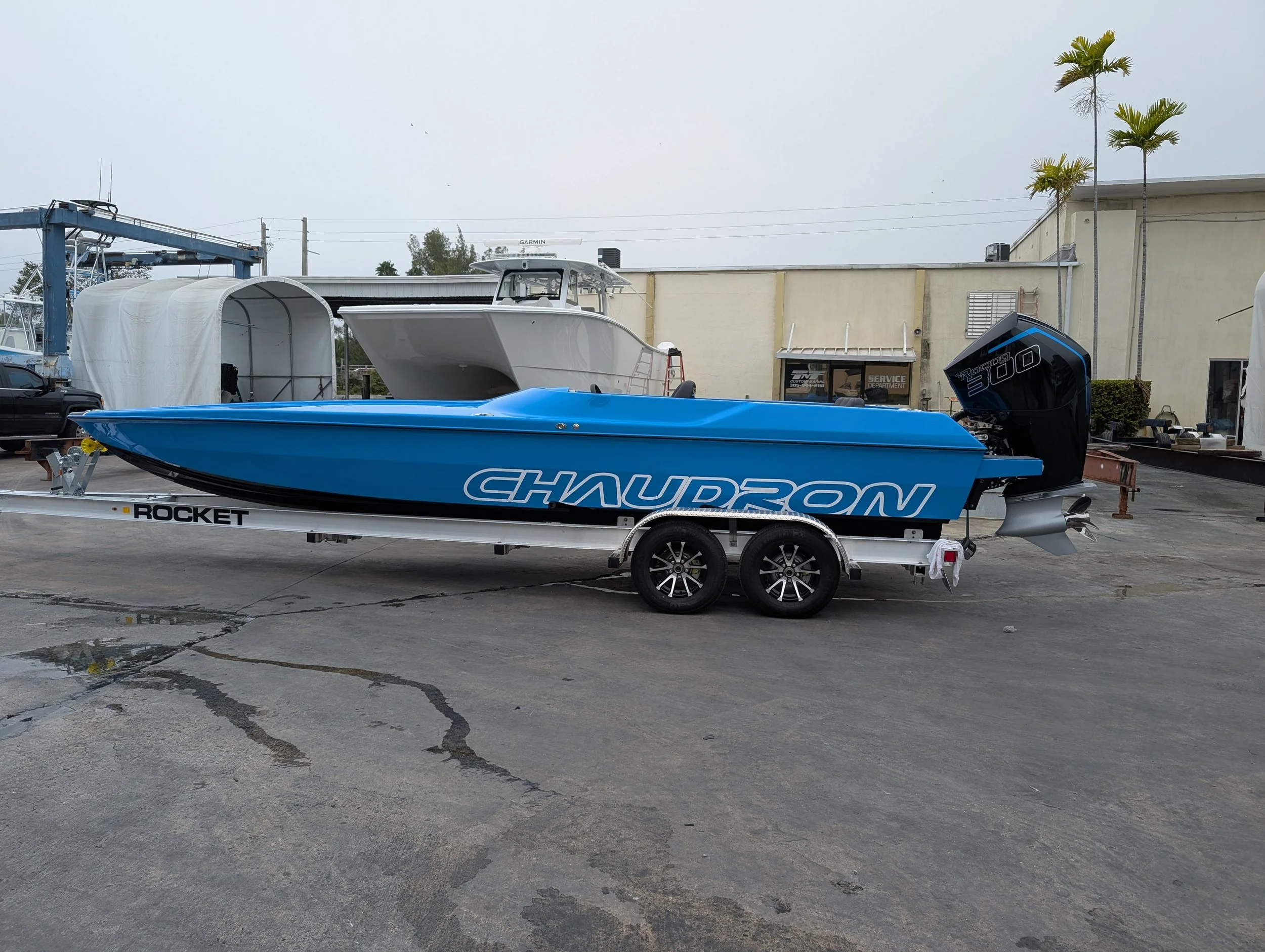The Best Repower outboards for 2025: Compact Performance Boats
When Mercury Racing released the competition racing 200 APX a few years ago, there was an anticipation that a consumer R engine would soon follow built on the same V6 platform, and that anticipation was finally rewarded late in 2024 with the introduction of the 200R. I had written extensively about the benefits of the lighter V6 on a small light hull, including a lower CG, less weight, and less cost. For new power, the 200R is basically peerless. You simply can’t buy anything off the shelf like this form another manufacturer. But, let’s look at the options that are out there under 300 HP for small boats.
With the V6 200R you get a stellar package out of the box. You have solid lower mounts on the tri-ram CMS midsection, 2 gearcase options, both featuring 1.75 ratios and weighing in around 470 to 490 lbs; the sport master is heavier than the torque master. Both gearcases feature cambered skegs, as they are meant to be run as singles, not twins. Conventional front mount steering and DTS controls are how they come. A key benefit of the R is the 6,400 RPM range as well as the tuning of the engine. If you’re buying new, not much can touch those features bone stock.
Similar but very different. The 200R is a different animal, focused purely on the single engine compact performance boat, with all the right features and options.
Of course, you can get used 3.4 V6 Mercs now, which you could add the solid lower mounts to and either modify the 4.88” case or potentially bolt on a sport master, or torque master. This is a good option for many on a budget who want the V6 and a Merc. The 200R will have the RPM advantage, which can be significant as you play around with different props, the ability to rev it up to 6,400 could get you more than a few MPH on certain boats. There is an additional cost to upgrading to DTS. If you want mechanical shift, the 175 ProXS is the best deal for the V6. There is a new 150R V6 introduced at the same time as the 200R but it is not high performance oriented. With the 150R, you have the 4.88” case, DTS, 1.85 gears and an optional 25” mid, so it’s actually an engine for heavier hulls, potentially running twins too. For a single, you’re better off with the mainline V6, or 150 ProXS.
The ProXS is a good line, but the 200R takes everything to the next level, jus as the other R engines do. That said, you could now add the factory lower mounts to the V6 or V8 and modify or replace the gearcase on a used engine if you want to customize.
Yamaha is gaining much popularity in the performance world as the Japanese engine maker builds very reliable and powerful outboards. The SHO line is aimed at the performance bass market and inshore fishing market. For those dedicated Yamaha fans, you get big displacement and power in the 4.2L V6, with a good gearcase, that can be modified for higher speeds. You get many aftermarket options that we’ve written extensively about, from solid mounts to fat shaft kits, you can build a great Yamaha. You can also tune the ECU for more power and RPM. This V6 is huge though, and with the tune is making over 300 HP, which is great, competing more with the 300R.
Yamaha keeps it simple, mechanical shifting throughout the lineup, and big displacement V6 or smooth running 4 cylinders. The choice for the aftermarket enthusiast.
If you want a compact Yamaha, the 2.8 4 cylinder is underrated. The 175 SHO has a 1.85 gear ratio, is a smooth revving double over head cam design, and is a fairly compact engine. You now have access to some tuning and parts to make it better, putting it in competitive range of the 200R, although the 4 cylinder will never be as smooth as that V6, and the torque won’t be the same. Even the weight savings is probably only slightly on the Yamaha.
One key advantage of the 2.8L Yamaha SHO is that they have sold tons of them, so used ones are plentiful. The 150 has a 2:1 gear ratio and I don’t believe it has the variable valve timing that the 175 SHO has, but are very similar. Both are mechanical only.
A classic Bullet 20, you can see the size of the 4.2 SHO, it’s not small.
The Mercury V6 175 ProXS is a great value and is mechanical shift so you can save a ton of money retaining your rigging on a repower. I love the DTS, but it will cost you on a repower. Of course the 4 cylinder Mercs are good engines, reliable, big displacement and reasonably light for four strokes. The 150 ProXS is priced really well, the gear ratio isn’t ideal but overall it’s a nice little engine. You can get V8 ProXS and R motors from Merc as certified used ones, so you can get deals on those as well, with a vast range of power from 200 to 300, with size and weight being the drawback on smaller boats.
For 2025, if you want a compact high performance outboard out of the box, the Mercury Racing 200R is impossible to beat. You get the gearcase option of sport master and torque master, 1.75 gears, solid mounts and it’s tuned to rev up to 6400 RPM. With that gear ration and RPM range, and presumable generous HP output, the 200R should be the best performing 200 or 225 on the market. Your setup will be key. I should have real world data on a test boat running the 200R, so far the results are incredible.
The competition 200 APX V6 sparked the idea of a 200R and it’s something enthusiasts have been talking about for a long time. The 200R is the best compact repower outboard of 2025. Photos from Mercury Racing.











